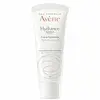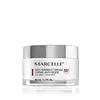What's inside
What's inside
 Key Ingredients
Key Ingredients

 Benefits
Benefits

 Concerns
Concerns

 Ingredients Side-by-side
Ingredients Side-by-side

Water
Skin ConditioningParaffinum Liquidum
EmollientGlycerin
HumectantIsohexadecane
EmollientDimethicone
EmollientCetearyl Alcohol
EmollientCarthamus Tinctorius Seed Oil
MaskingIsocetyl Stearoyl Stearate
EmollientPEG-100 Stearate
1,2-Hexanediol
Skin ConditioningButyrospermum Parkii Butter
Skin ConditioningCetearyl Glucoside
EmulsifyingBenzoic Acid
MaskingBeta-Sitosterol
Emulsion StabilisingBHT
AntioxidantDisodium EDTA
Parfum
MaskingPolyacrylate-13
Polyisobutene
Polysorbate 20
EmulsifyingSodium Hydroxide
BufferingSorbitan Isostearate
EmulsifyingXanthan Gum
EmulsifyingWater, Paraffinum Liquidum, Glycerin, Isohexadecane, Dimethicone, Cetearyl Alcohol, Carthamus Tinctorius Seed Oil, Isocetyl Stearoyl Stearate, PEG-100 Stearate, 1,2-Hexanediol, Butyrospermum Parkii Butter, Cetearyl Glucoside, Benzoic Acid, Beta-Sitosterol, BHT, Disodium EDTA, Parfum, Polyacrylate-13, Polyisobutene, Polysorbate 20, Sodium Hydroxide, Sorbitan Isostearate, Xanthan Gum
Water
Skin ConditioningOctyldodecanol
EmollientSesamum Indicum Seed Oil
EmollientCetyl Alcohol
EmollientGlyceryl Stearate
EmollientPEG-100 Stearate
Glycerin
HumectantSodium PCA
HumectantCeramide NP
Skin ConditioningCeramide AP
Skin ConditioningCeramide EOP
Skin ConditioningSecale Cereale Seed Extract
AbrasivePhytosphingosine
Skin ConditioningAllantoin
Skin ConditioningXanthan Gum
EmulsifyingDimethicone
EmollientTocopheryl Acetate
AntioxidantCarbomer
Emulsion StabilisingTriethanolamine
BufferingPentylene Glycol
Skin ConditioningSodium Lauroyl Lactylate
EmulsifyingCholesterol
EmollientBHT
AntioxidantDiazolidinyl Urea
PreservativeMethylparaben
PreservativePropylparaben
PreservativeButylparaben
MaskingWater, Octyldodecanol, Sesamum Indicum Seed Oil, Cetyl Alcohol, Glyceryl Stearate, PEG-100 Stearate, Glycerin, Sodium PCA, Ceramide NP, Ceramide AP, Ceramide EOP, Secale Cereale Seed Extract, Phytosphingosine, Allantoin, Xanthan Gum, Dimethicone, Tocopheryl Acetate, Carbomer, Triethanolamine, Pentylene Glycol, Sodium Lauroyl Lactylate, Cholesterol, BHT, Diazolidinyl Urea, Methylparaben, Propylparaben, Butylparaben
 Reviews
Reviews

Ingredients Explained
These ingredients are found in both products.
Ingredients higher up in an ingredient list are typically present in a larger amount.
BHT is a synthetic antioxidant and preservative.
As an antioxidant, it helps your body fight off free-radicals. Free-radicals are molecules that may damage your skin cells.
As a preservative, it is used to stabilize products and prevent them from degrading. Specifically, BHT prevents degradation from oxidation.
The concerns related to BHT come from oral studies; this ingredient is currently allowed for use by both the FDA and EU.
However, it was recently restricted for use in the UK as of April 2024.
Learn more about BHTDimethicone is a type of synthetic silicone created from natural materials such as quartz.
What it does:
Dimethicone comes in different viscosities:
Depending on the viscosity, dimethicone has different properties.
Ingredients lists don't always show which type is used, so we recommend reaching out to the brand if you have questions about the viscosity.
This ingredient is unlikely to cause irritation because it does not get absorbed into skin. However, people with silicone allergies should be careful about using this ingredient.
Note: Dimethicone may contribute to pilling. This is because it is not oil or water soluble, so pilling may occur when layered with products. When mixed with heavy oils in a formula, the outcome is also quite greasy.
Learn more about DimethiconeGlycerin is already naturally found in your skin. It helps moisturize and protect your skin.
A study from 2016 found glycerin to be more effective as a humectant than AHAs and hyaluronic acid.
As a humectant, it helps the skin stay hydrated by pulling moisture to your skin. The low molecular weight of glycerin allows it to pull moisture into the deeper layers of your skin.
Hydrated skin improves your skin barrier; Your skin barrier helps protect against irritants and bacteria.
Glycerin has also been found to have antimicrobial and antiviral properties. Due to these properties, glycerin is often used in wound and burn treatments.
In cosmetics, glycerin is usually derived from plants such as soybean or palm. However, it can also be sourced from animals, such as tallow or animal fat.
This ingredient is organic, colorless, odorless, and non-toxic.
Glycerin is the name for this ingredient in American English. British English uses Glycerol/Glycerine.
Learn more about GlycerinPeg-100 Stearate is an emollient and emulsifier. As an emollient, it helps keep skin soft by trapping moisture in. On the other hand, emulsifiers help prevent oil and water from separating in a product.
PEGS are a hydrophilic polyether compound . There are 100 ethylene oxide monomers in Peg-100 Stearate. Peg-100 Stearate is polyethylene glycol ester of stearic acid.
Water. It's the most common cosmetic ingredient of all. You'll usually see it at the top of ingredient lists, meaning that it makes up the largest part of the product.
So why is it so popular? Water most often acts as a solvent - this means that it helps dissolve other ingredients into the formulation.
You'll also recognize water as that liquid we all need to stay alive. If you see this, drink a glass of water. Stay hydrated!
Learn more about WaterXanthan gum is used as a stabilizer and thickener within cosmetic products. It helps give products a sticky, thick feeling - preventing them from being too runny.
On the technical side of things, xanthan gum is a polysaccharide - a combination consisting of multiple sugar molecules bonded together.
Xanthan gum is a pretty common and great ingredient. It is a natural, non-toxic, non-irritating ingredient that is also commonly used in food products.
Learn more about Xanthan Gum